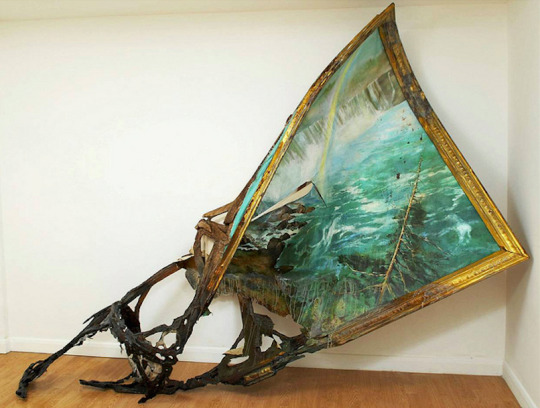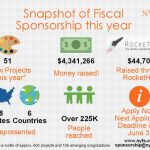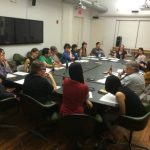EMERGENCY PREPAREDNESS FOR ARTISTS
Safeguard your artistic practice with these resources
Natural disasters can occur at any moment – tornadoes, fires, floods and hurricanes all have the power to devastate the lives of artists with irreplaceable artwork immediately destroyed. The thought of repairing a studio or workspace is incredibly daunting. Yet when an emergency strikes, you should be prepared. Well, what does that mean?
Most artists don’t like to think about emergency preparedness and don’t grasp its importance until an emergency happens to them. Make a point of finding out what to do before, during, and after a natural disaster. Being well-prepared can help you recover quickly financially and re-start your artistic practice. Here are few tips in order to prepare for unexpected disasters and safeguard your studio:
Know your environment
Think about the geographic location of your studio. Is your city more prone to heavy rainfall and flooding? Or are brushfires a major concern?
Following Hurricane Sandy in 2012, artists reported millions of dollars in damages and lost revenue. The devastation of Sandy reminded artists of all disciplines that emergency preparedness is absolutely necessary. By being aware of the types of weather advisories in your region, you can take the necessary steps to protect your workspace. For instance, artists who live in hurricane regions should avoid storing inventory in basements, should invest in hurricane shutters, and should consider evacuation routes in advance. Sign-up for updates from the National Weather Service and visit Ready.gov for seasonal hazard preparedness guides and tips.
Safekeeping of Records
According to Craft Emergency Relief Fund’s (CEFF+) online series, Studio Protector, the first step to protecting your studio is safekeeping your records. Legal documents, grant applications, commissions and invoices are all important records that impact your artistic livelihood. In addition, disaster relief programs often will require specific documentation of your career. These records may include:
- Résume
- Artist statement & bios
- Work samples (slides, digital images, recordings, tapes, DVDs, etc.)
- Contracts and agreements (sales, licensing, commission, loan, consignment)
- Invoices and receipts
- Visual documentation of your studio (photo or video)
- Artwork valuation (bills of sale or appraisal)
- Financial records (accounting and payroll)
- Tax records (property, income, sales)
- Inventory
- Legal documents
- Lists of suppliers and vendors
- List of contacts (collectors, agents, gallery owners, art dealers, etc.)
- Grant applications and awards
Keep a copy of all vital documents in waterproof and fireproof storage boxes. In case of an emergency you can quickly evacuate with these items on hand.
The Joan Mitchell Foundation provides a comprehensive guide to record keeping and inventory systems for artists. Their Creating a Living Legacy (CALL) initiative teaches individuals how to archive their collections, along with various tools for documentation and inventory management.
Explore the different methods of cataloguing your artwork – whether you use an index card, excel spreadsheet or online database – you’ll have the information needed for a fresh start.
Check your insurance
Emergencies are bound to happen. Therefore, it’s crucial that you conduct a complete studio inventory and check your insurance policy annually and remember that your renter’s or homeowner’s insurance may not cover your artwork. When you catalogue your equipment and art collection, you gain a better understanding of the overall value of your work. Your inventory should include a detailed list of your artwork, including physical descriptions and high-resolution images. This will help you determine how much insurance coverage you need prior to an emergency. In addition, you’ll have documentation to establish the value of items if you ever have to file an insurance claim or apply for emergency grants or FEMA aid. When selecting insurance consider the following questions:
- Is your insurance policy current and adequate for your needs?
- What level of coverage are you insured for?
- Does your insurance policy provide coverage for the types of events distinct to your region? For example, are you protected against earthquakes and flood damage?
For an overview of different types of art-related insurance plans and policies, please read Business Insurance for Individual Artists, along with Fractured Atlas’ Insurance breakdown by discipline, entitled Your Virtual Pocket Guides.
Art Service Organizations
NYFA, along with art service organizations like CERF+, help artists prepare and act quickly when faced with an emergency. Most individuals are aware of assistance available through the Red Cross, FEMA, and the SBA. (There are some helpful tips for getting help from the major national relief providers here on the Studio Protector site.) However, emergency funding is often limited for freelancers and artists through traditional channels. Learn what artist organizations provide grants and actively support artists during unforeseen emergencies:
NYFA Source provides an up-to-date directory of emergency grants and recovery resources. Our database meets the needs of the arts of all disciplines and various stages of their career. Visit our Emergency Resources page for a full list of relevant opportunities.
The Actors Fund provides information about disaster services, health and safety services and emergency preparedness. The Entertainment Assistance Program (EAP) supports entertainment professionals with counseling, advocacy, and emergency financial aid. In addition, they also offer workshops and office hours in Chicago, Los Angeles, and New York.
CultureAID is a network of cultural institutions and art organizations that support emergency response efforts and facilitate sharing of resources following disasters.
Craft Emergency Relief Fund + Artists’ Emergency Resources (CERF+) provides emergency relief assistance includes small grants, no-interest loans, access to online resources, like the Studio Protector campaign.
MusiCares provides assistance for musicians – their resources cover a wide range of financial, medical and personal emergencies.
American Institute Conservation of Historic and Artistic Works Collection Emergency Response Team (AIC-CERT) supports cultural institutions during emergencies by working directly with first responders, state agencies and the general public.
Popular Emergency Grants for Visual Artists
Visual artists tend to face significant amounts of damage to their studios and workspaces. There are notable foundations that specifically assist painters, illustrators and printmakers who have experienced damage losses and/or displacement due to natural or man-made disasters.
While challenging to obtain, financial support from foundations can often restore normalcy to your creative practice and ease the anxiety that often accompanies unexpected emergencies.
For each grant, eligibility requirements often vary by organization. Grant applications may be reviewed for the following:
- Estimated budget needed to address the emergency
- Size and scope of the emergency situation
- Purpose of the grant funds (use of funds must relate to services affected by the emergency)
- Existence of alternate funding sources
- For guidelines and program information always visit the organization’s website.
Overall, artists should learn how to protect themselves and prepare for unexpected circumstances. Whether it’s a hurricane or a manmade disaster, having a plan will help you operate during an emergency.
Visit NYFA’s full list of emergency resources, along with NYFA Source, a free directory of over 12,000 opportunities, grants, and services for individual artists nationwide.
– Glory Edim, Program Associate, Online Resources
Image: Valerie Hegarty, Sculpture Fellow ‘09 – ‘Niagara Falls’





